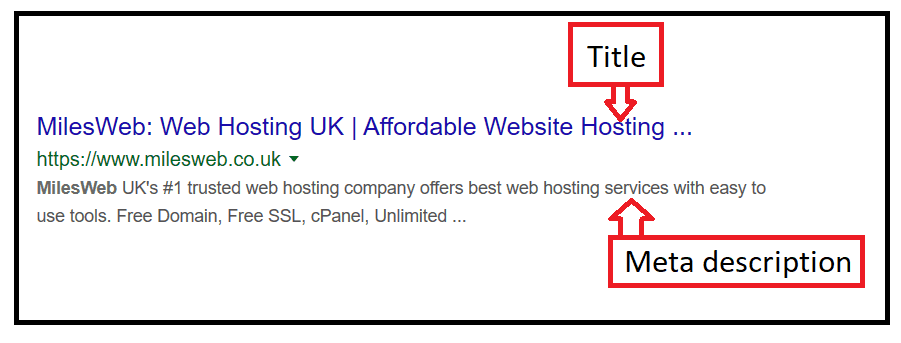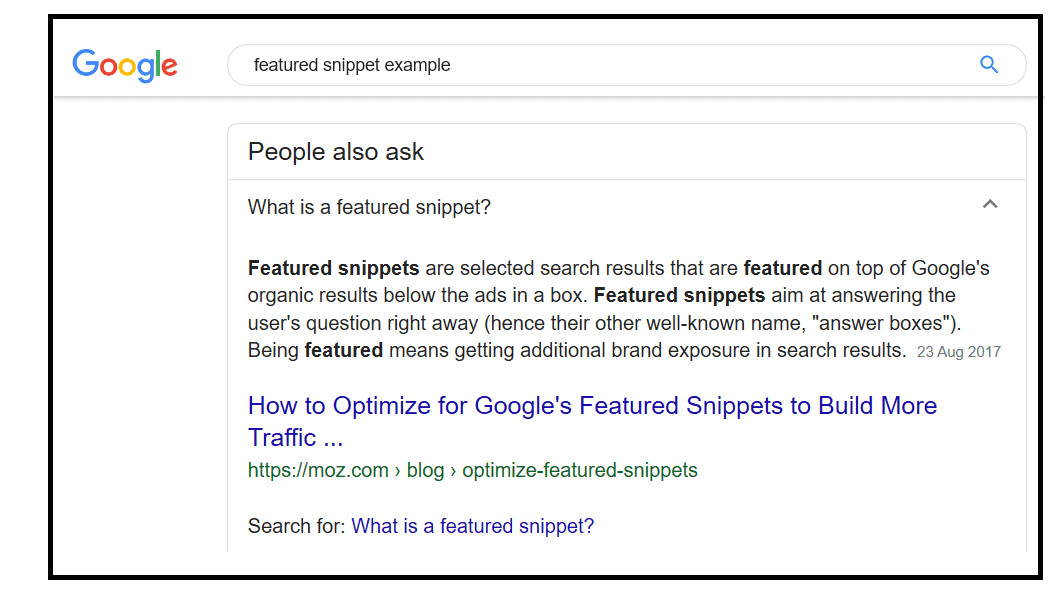Do you want to improve your SEO this year? It can seem like a daunting task and you may not know where to start. Luckily, these ten strategies are simple to implement right away.
Use Powerful Titles And Meta Descriptions
In order to get people to find your site, you need to have a high-ranking score. Of the many rules used by Google to get your site highly ranked, one rule to follow is to avoid using repeated titles, pages and content.
You need a title that is descriptive so that people know exactly what your page is about. You also want to include the keyword in your title tag so that it will show up when a user does a Google search.

The other aspect to consider is the meta description. Meta descriptions are limited to about 150 to 160 characters. You want to write a description that stays within these limits, otherwise Google truncates it. If you don’t write a meta description yourself, you will find that instead one will be generated for you. This tends to come directly from the content of the page itself, but is often truncated and may not make any sense at all.
Instead, make sure to write a description that accurately expands on your title and includes ‘power’ words. The crucial aspect here is to try to make the title and meta description as enticing as you can, so that people searching will click on your page.
Make Sure URLs are Keyword Specific
As well as making sure that your title tag includes keywords related to your content, you need to make sure that your URLs also match. Including your title tags in your URLs will help with your page rankings as well as make it clear to readers what your page is about.
URLs can be generated by default, but these may consist of the date or other information, such as numbers and irrelevant data, which will have a negative impact on your SEO ranking.
URLs will, by default, contain your title. However, to really impact positively on your SEO, you want to make sure that your URL contains your focus keyword. To this end, try to make it short and a variation of your longer title or headline.
Related: Choosing Keywords to Improve the Positioning of a Website in Search Engines
Optimize The Visual Content
Visual content is growing quickly. Posts that make use of visual content, be that in the form of images, videos or infographics, tend to perform better than those with no images.
The key is to include visual content which is relevant to your post. It needs to add value to the content and ideally should aim to illustrate a key point or a complex concept, in a clear and direct way.
Infographics are particularly engaging and informative. People tend to share these posts regularly via social media, which will help to drive traffic to your site. You might also find that popular images, infographics or ‘concept visuals’ become embedded in other people’s sites. This can be a great way to generate backlinks to your own site. The use of video is also becoming increasingly popular and again, is easily shared via social media.
When using images on your site make sure that you are using image sizes which are appropriate and high-quality. Images take up a lot of space, which can affect the load speed of your site. In order to avoid this, compress your images to reduce their size, whilst still maintaining their quality.
Implementing alt text into images is another way to help drive traffic to your site, this time from Google Images. When you upload an image, write a short, specific description about the image. If you can, use the keyword in your alt text, but make sure that it’s relevant to the image itself.
Also, check your ‘featured image’ and make sure that it is relevant to your content. This image is the one that will be used when your post is shared on social media platforms and search engines. It’s important to try to make this as appropriate as you can to entice readers.

Make Your Website 100% Mobile-Friendly
After Google’s April 2015 search algorithm update, known as mobilegeddon, mobile-friendly websites gained a significant search ranking boost. Meanwhile, mobile-unfriendly websites saw their rankings drop in SERPs.
The importance of having a mobile-friendly website has never been greater than today. Your website should be mobile-friendly on every page.
To determine whether your website is mobile-friendly, use tools such as Google’s Mobile-Friendly Test and HubSpot’s Website Grader.
Update Existing Low-Performing Content
You may have found that some of your existing content is no longer getting traffic. You might choose to delete this content, or you can refresh it. Update old content to make it relevant to current topics and the current year. This will demonstrate your ability and commitment to providing high-quality content, both to readers and search engines, which will impact positively on your overall SEO ranking.
Start by looking at posts which have not been updated in the last 6 months. Check to see whether the pertinent keywords are included and then rewrite the content with fresh data. You can also update existing posts by adding visual content to it. Rather than simply publishing new articles each time, try to optimise older posts to keep them relevant.
Make Use Of Backlinks
Links are essential to helping drive traffic to your site. The first thing you need to do is check whether the links on your site are fully functioning. Check that the links are current and that they all lead somewhere. Any links which are no longer working should be removed.
Another way to boost pages which may be underperforming is to give them a boost using a backlink from another page on your website. Not only do they add a sense of authority to your site, but they also help to boost your Google rankings.
Creating backlinks to your site from other platforms is also useful. You can do this by guest posting on other sites and then create a backlink to your own site from your bio. Another strategy, similar to guest posting, is via podcasts. If you take part in any podcast, make sure that a backlink to your site is created.
If you’ve been mentioned in content on other sites, reach out to their webmaster and offer to provide them with a link. This can also be applied to any material from your site (be it a quote or an image) and ask to have a link back to your site added. Beware of poor-quality backlinks as they can be detrimental to your SEO. Check the types of backlinks that your site has and remove any bad ones.
Win A Featured Snippet
Getting your content to appear as a featured snippet could help to increase your CTRs (click-through rates). Featured snippets are taken from sites that rank in the top 10 of Google search. For this reason, if you want your site to appear as a featured snippet you need to make sure that you are using keywords that you are already highly ranked for. You then need to find opportunities where the keyword is used and that has a featured snippet available.

Another key factor is making sure that you have added ‘snippet bait’ to the content you specifically want to feature. This means creating a 40 to 60-word block of content which will appear on the featured snippet.
Even if you rank highly for your keyword, you also need to make sure that your content is in the correct format. Different content may require different formatting. Some featured content works best in a paragraph styles, whilst ‘how to’ posts often tend to be in a list style. If you are hoping to be featured in a table snippet, then you need to have created a table in your content that Google can use to acquire data from. Correct formatting can be the difference between winning or losing a featured snippet.
Longer, Research-Backed Content
The quality of your content is also an important factor in your rankings. Longer content is more likely to rank more highly. However, search engines are sophisticated enough to tell the difference between good-quality content and fluff content. In order to rank highly you need to make sure that you have high-quality lengthy articles. In particular, articles between 2000 – 2400 words tend to be the most successful.
Content which comes from research is also particularly successful. Research content which includes data, in the form of statistics or surveys can be especially popular. Similarly, content that links to or is informed by studies or industry research tends to be highly ranked. These types of posts are more time-consuming than the average to write. However, they are also likely to attract more visitors to your site and can do especially well in terms of creating backlinks and being shared on a range of social media platforms.
Responsive Page Designs And Speed
Increasingly people are accessing sites on a range of devices. You need to make sure that your site loads properly and accurately whatever device is being used. This means that it should be fluid and adapt to the different screen sizes. This is particularly important if you have used images or visual content. Make sure that the content resizes correctly and appropriately, especially if it is being viewed on a smaller screen such as a mobile phone.
In addition to responsive page designs, you also want to make sure that your site loads quickly. Sites which load faster are ranked higher than those which load slowly. You can do this by using compressed images and some plugins to boost your page speed. Some plugins do this by cashing your site or making sure that redundant Javascript codes are unloaded on a certain page.
Related: Website Speed Optimization – What You Need to Know About It?
Share And Promote Your Site

All sites benefit from having a ‘sharing’ button and in recent years, it has become a must for any site that wants to rank highly. You should make sure that every page of your site is able to be shared, not only your posts. If your site is getting plenty of social shares and likes, this sends a signal to search engines that your site is valued by people. Not only will this help you to get more exposure, but it will also lead to a boost in your rankings.
Ideally, you want to be able to share your pages across multiple social media platforms. Make sure that your share buttons are clearly displayed on each page, preferably on a sidebar, or at the top or bottom of the page. This way, users can easily share your page, without it intruding on their view.
Another way to boost to your rankings is to include a comments section at the bottom of your posts. According to Google, encouraging comments on your site can be as strong an engagement signal as using other social media platforms. In addition to enabling comments, you will also be creating a community, which is more likely to return to and share your site and content.
Conclusion
There are plenty of SEO strategies that you can use to improve your rankings, but these ten techniques are actionable and simple to use. Remember:
- Start with creating high-quality content and use images.
- Use keywords in your titles and meta descriptions.
- Make sure all links are updated and remove any ‘zombie’ pages and links from your site.
- Use rich keywords and include them in your URLs.
So now it’s over to you. What techniques will you be trying out?















